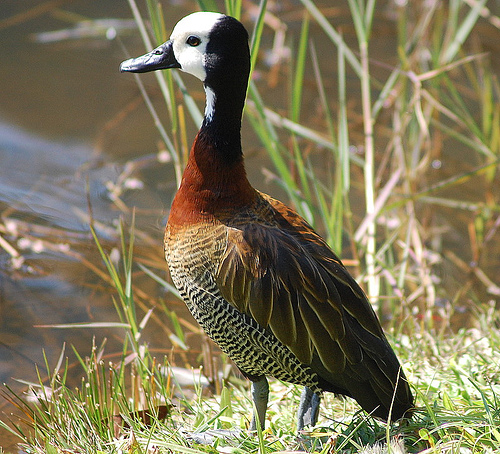
Dendrocygna viduata
SUBFAMILY
Dendrocygninae
TAXONOMY
Anas viduata Linnaeus, 1766, Cartagena, Colombia. Monotypic.
OTHER COMMON NAMES
English: White-faced tree duck; French: Dendrocygne veuf;
German: Witwenpfeifgans; Spanish: Suirirн Cariblanco.
PHYSICAL CHARACTERISTICS
15–19 in (38–48 cm); 1.1–1.8 lb (502–820 g). Brown and gray
feathers with dark neck and eponymous white face.
DISTRIBUTION
Throughout tropical America from Costa Rica south through
northern and eastern Colombia and Guyana in east; in south
from eastern Bolivia east to Uruguay; Trinidad. In Africa south
of the Sahara to Namibia and Natal; Madagascar; Comoro
Islands.
HABITAT
Freshwater marshes, grassy lagoons, and flooded fields.
BEHAVIOR
Not territorial. Move regionally as a response to varying water
levels.
FEEDING ECOLOGY AND DIET
Forages mainly at night by diving; also wades and dabbles near
surface. Feeds on grasses, seeds, rice, and invertebrates.
REPRODUCTIVE BIOLOGY
Perennially monogamous. Breeds during rainy season. Wellconcealed
nests made on the ground. Lay 4–13 eggs; incubation
26–28 days; fledging c. 8 weeks.
CONSERVATION STATUS
Not threatened. Common throughout range.
SIGNIFICANCE TO HUMANS
None known.
Photo Gallery of - White-faced whistling duck
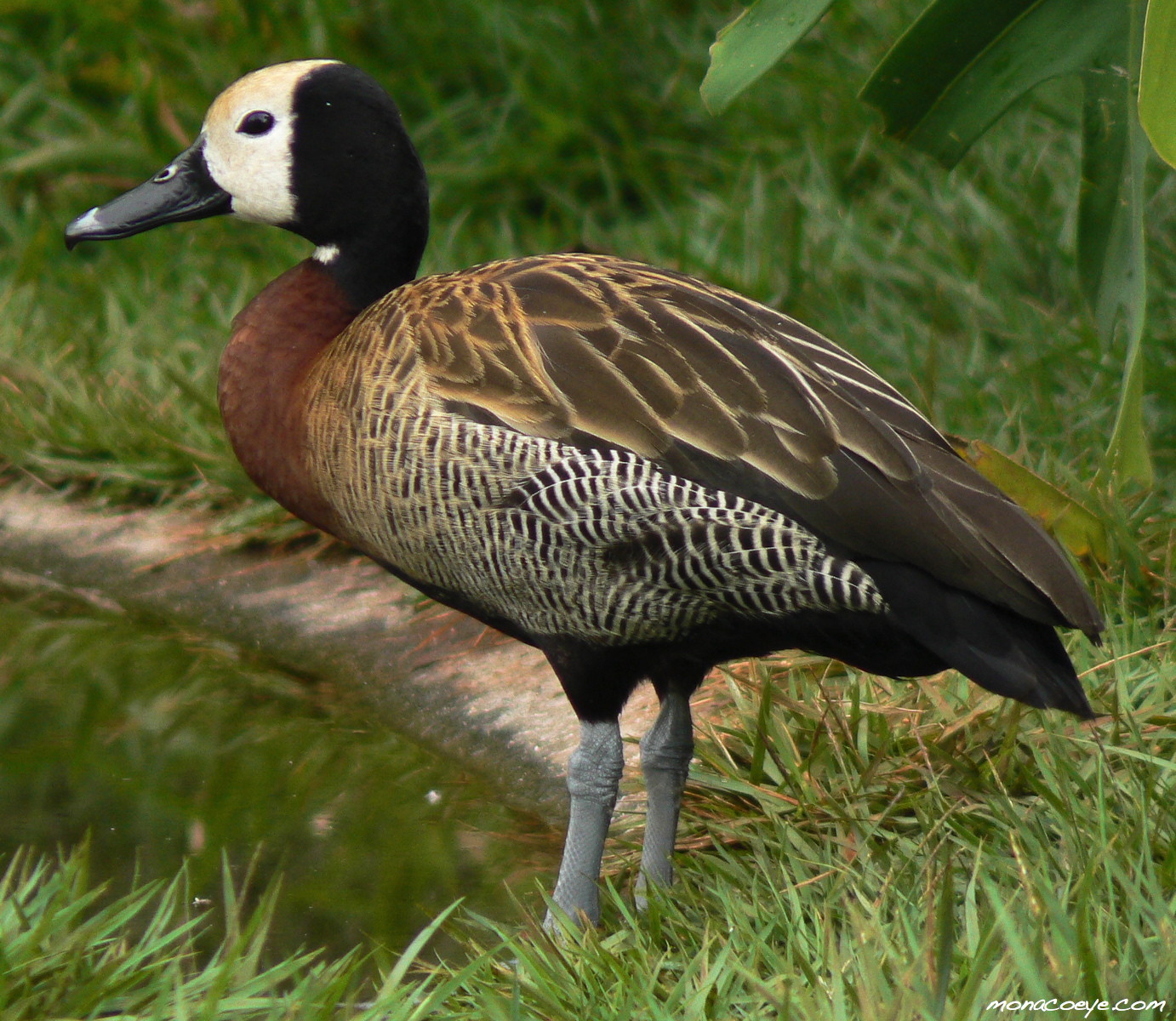
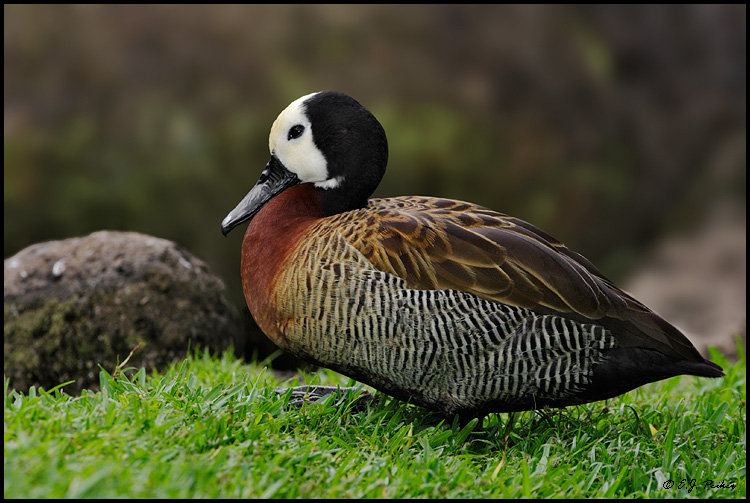
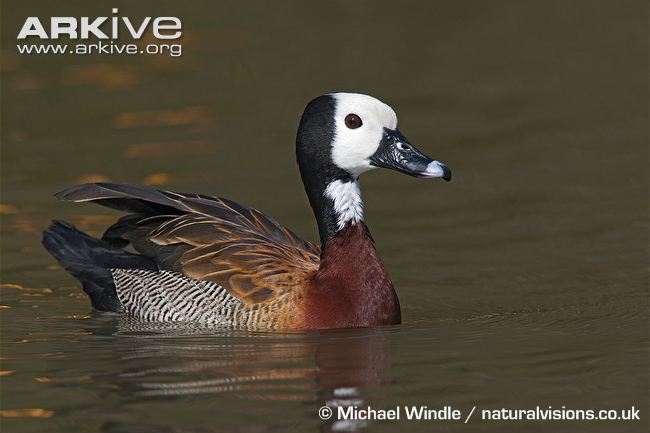
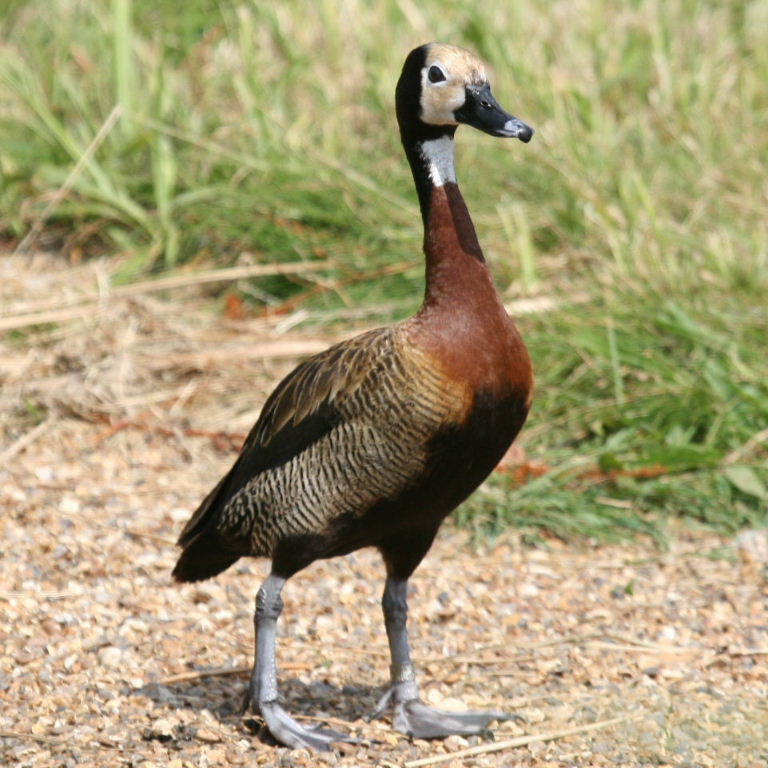
 Animalia Life
Animalia Life